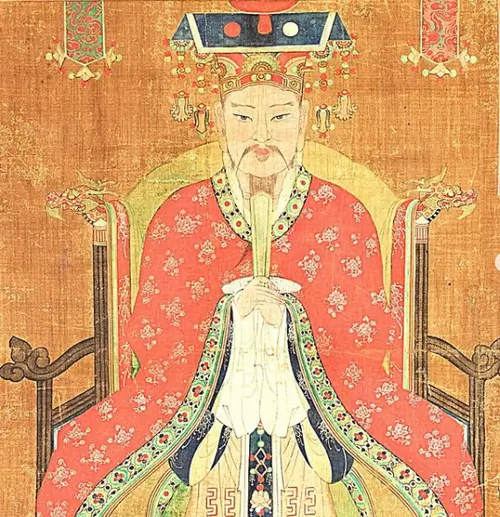China, otherwise known as the People’s Republic of China, is the world’s most populous country with over 1.4 billion citizens. Located in East Asia, it covers an area of approximately 9.6 million square kilometers making it the world’s third-largest country.
In the current global landscape, China is a dominant presence, with a gross domestic product of 14.34 trillion USD. But as fascinating as their present is, how they got here is more so.
What follows is a deep dive into China’s history – specifically, its history with cannabis.
Cannabis is an annual herbaceous flowering plant indigenous to Eastern Asia but now common throughout the world due to aggressive cultivation and widespread use. Used as a source of industrial fiber, seed oil, food, recreation, and medicine, its versatility is matched only by its controversy.
At present, much of the world still outlaws the cultivation of cannabis due to its potential recreational use as a psychedelic drug but ideas (and laws) are slowly shifting. Part of that shift is due to a greater understanding of its uses throughout history. What follows is a deep dive into some of that history.
The First Record
Tracing the origins of cannabis use is difficult – records are lost over time and artifacts destroyed either deliberately or accidentally. That said, what records do exist indicate that China was one of the first countries to farm and use cannabis.
One of the earliest recorded instances of the plant’s use comes from a prehistoric site in Yangmingshan near Taipei. Strands of hemp were found in pottery shards used by the Tapen king culture – people who lived between 10,000 and 3000 BC.
Fragments of hemp cloth have also been found in burial chambers dating back to the Chou Dynasty (1122-249 B.C.) while the Shu King, a book dating to about 2350 B.C., refers to Shantung soil as “rich with silk and hemp”.
This suggests that the ancient Chinese people understood the versatility and usefulness of cannabis well before the rest of the world.
Uses of Cannabis in Ancient China
Cannabis is incredibly versatile. It can be used as a source of industrial fiber, seed oil, food, recreation, and medicine.
The people of ancient China had a thorough understanding of its various uses and put that understanding to the test throughout the ages.
Its first known use was, of course, decorative but its rich history goes far beyond its aesthetic uses.
Clothing
Hemp fabric is a type of textile that is made using fibers from the stalks of the cannabis plant. These fibers are extraordinarily tensile and durable making them ideal for use as textiles.
Once pressed into fabric, hemp has a similar feel to canvas or cotton. It is not susceptible to shrinkage and is highly resistant to pilling. Some estimate its strength as three times that of cotton. In current practices, a typical cotton t-shirt can last up to ten years but one made of hemp may last double or even triple that.
In ancient China, hemp fabric was cheap and incredibly durable making it the fabric of choice for most common folk. Though few examples of ancient hemp clothing remain, more recent specimens prove that its dominance continued well up to the 13th century when cotton began to take over.
Warfare
Ancient China was an adversary not lightly antagonized. They were incredibly skilled at warfare and some of that skill can be attributed to their cultivation and use of cannabis.
Ancient Chinese bowstrings were woven from hemp fiber. This not only made them durable, it made them strong enough to outperform enemy bamboo strings. Because of this disparity, Chinese arrows could fly faster and further. This was an incredible advantage in wartime.
Hemp was so important as a wartime crop, Chinese monarchs allocated large portions of land to its specific growth. It was essentially the first war crop.
Paper
Paper is perhaps one of the most impressive and significant Chinese inventions. Hemp was a major ingredient in early Chinese paper. Fragments of paper containing hemp fiber have been found in ancient Chinese graves dating back as far as the first century B.C.
The Chinese made paper by crushing mulberry tree bark and hemp fibers into a pulp. This mixture was then placed into a tank of water, allowing the tangled fibers to rise to the top. These fibers were then removed and placed into a mold. Once dry, the fibers formed sheets that could be written on.
The Chinese would go on to keep their paper-making secret for centuries. Eventually, it became known to the Japanese during the 5th century A.D. and later, the Arabs in the 9th century.
Medicine
Though cannabis’s major uses were for hemp, the ancient Chinese explored and utilized its other properties as well.
The ancient emperor, Shen-Nung (c. 2700 B.C.), is widely understood to be the father of Chinese medicine. As a farmer himself, he looked to plants for cures to the ails of his suffering subjects.
According to legend, Shen-Nung tested poisons and their antidotes on himself, compiling an encyclopedia as he went. This book became known as the Pen Ts’ao and it lists hundreds of drugs derived from vegetable, animal, and mineral sources – including cannabis.
Shen-Nung called the drug derived from cannabis “ma” and went on to use it extensively.
Ma was a unique drug because it was both masculine (yang) and feminine (yin). The female cannabis plant, however, produced more medicine so it was more widely cultivated for that use. As a result, ma was often used to treat absences of yin such as menstruation, gout, rheumatism, malaria, beri-beri, constipation, and absentmindedness.
During the second century A.D., a Chinese surgeon named Hua T’o began to use cannabis as an anesthesia. Combining cannabis resin with wine, he invented ma-yo which he used to reduce pain during surgery. It is said that he performed painful organ drafts, loin incisions, chest incisions, and resectioning of intestines while his patients were anesthetized with ma-yo.
Recreation
There is little written evidence of the recreational use of cannabis in ancient China. That said, the Pen Ts’ao does state that “[the fruits of Cannabis] if taken in excess will produce visions of devils … over a long term, it makes one communicate with spirits and lightens one’s body”. It is thought, then, that recreational cannabis use was associated with Shamanism.
Unfortunately, Shamanism was on the decline during the Han Dynasty (206 BC – 220 AD) so there is little written evidence of Shaman religious practice.
There is, however, some physical evidence of the recreational use of cannabis in ancient China. In a burial site excavated in western China, a 2,500-year-old brazier was discovered containing stones that were commonly burnt to produce fumes. Along with those stones were compounds of the cannabis plant.
Tests revealed that the cannabis contained unusually high levels of THC – the psychedelic compound in cannabis – in relation to typical cannabis plants of the time. This proves the ancient Chinese not only made use of high THC cannabis but also intentionally cultivated it.
Modern China
In present day, it is illegal to use or possess cannabis in China. Largely demonized by the government, the penalties for being caught with the plant are severe.
While it is illegal to grow cannabis personally in China, it is produced on an industrial level. China is the world’s largest hemp manufacturer, producing just over 50% of the globe’s supply. Some proponents of cannabis are optimistic that this could signal a relaxation of laws in the future.
In Conclusion
Cannabis is an incredibly versatile plant that has been used for millennia across a variety of mediums. Ancient China certainly knew of its potential, producing textiles, bowstrings, paper, medicine, and more with it.
Though its use religiously and recreationally in ancient China is less understood, its influence cannot be understated.
© Kanab Inc. – Kanab Inc. is a Toronto based cannabis retail company that honors the historical significance and uses of the cannabis plant across cultures and civilizations. Kanab has now opened its first cannabis dispensary at the intersection of Don Mills Road and York Mills Road in North York region of Toronto, Ontario (South of 401, West of 404 / Don Valley Parkway, and East of Leslie). For more info, please visit: kanab.ca









